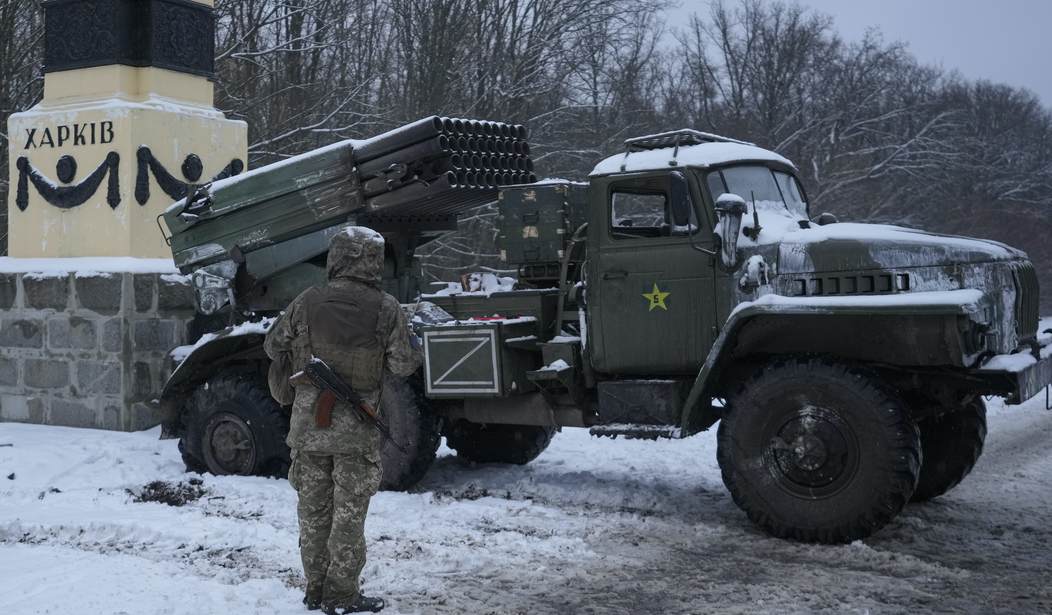On the night of February 11-12, 1951, three veteran Chinese Communist armies (39th, 40th, and 66th) and a North Korean corps kicked off the Chinese Army’s spring offensive against UN forces in Korea. The initial onslaught hit the green ROK Army 8th Division assigned to US X Corps and sent broken and reeling from the battlefield. The situation deteriorated, and X Corps was forced to withdraw and regroup. The Chinese advanced against the only allied force remaining in their path, the 23d Infantry Regimental Combat Team led by Colonel Paul Freeman, defending the high ground around the town of Chipyong-ni.
On the morning of 14 February, First Lieutenant Lee Hartell was riding as an artillery “air observer” in a Cessna O-1, called the L-19 Birddog by the US Army. During a Korean February, there isn’t a lot of greenery so Hartell became suspicious when he saw swaths of greenery in the river bottoms and along the ridgelines where he was flying. He ordered the pilot to drop down lower so he could take a look. Much to his surprise, or maybe not, he observed thousands of men and pack animals on the move. Most had bunches of tree branches strapped to their packs and affixed to the panniers carried by the animals for camouflage [no mention of camouflage is complete without this video]. He was looking at four Chinese divisions (119th, 120th, 197th, and 198th) fresh off their victory, moving south towards the Main Supply Route for X Corps. Hartell called for fire from his artillery battalion, the 15th Field Artillery. As the scope of the target became more evident, the Division Artillery, about 72 tubes of the 2d Infantry Division, joined the fray. The more they shot, the bigger the target became. Eventually, all the artillery in X Corps was firing as fast as humanely possible. When the last cannoneer keeled over from exhaustion, over 5,000 Chinese soldiers lay dead. Uncounted Chinese soldiers crawled off to die from their wounds or decided they had urgent business elsewhere.
The Chinese were taught a brutal lesson about the killing power of American artillery.
The next day things got really bad for the irresistible Chinese tidal wave as it crashed upon the immovable object that was the Tomahawks of the 23d RCT.
I’m an infantryman, but despite the inter-branch rivalry, I’ve never met an infantry leader who had any desire to go into combat without his artillery forward observer within arm’s reach. From its earliest days, artillery has been THE killer. As much as we infantrymen have a romance with the bayonet, artillery accounted for 70% of casualties in the European Theater in World War II (both sides, both fronts) and 60% of American casualties during the Korean War. Putin’s War in Ukraine gives us data points that nothing has changed.
In the days after the Russian invasion, a lot of video showed up on social media featuring the exploits of Ukrainian anti-tank teams. The Javelin anti-tank missile became an internet meme.
St Javelin. The meme that roused a nation and the world. Now @ZelenskyyUa has it on a T-shirt 😁 👍🇺🇦#SlavaUkraini #ukraine
c.c @MrChairmanUK @PurnL @DominicFarrell @BloodyPolitics @BWallaceMP @graeme_from_IT https://t.co/nDHpC0Clka pic.twitter.com/rWu4qqDnVy— Myson T. Potts 🇬🇧 (@android_dogma) April 30, 2022
A study of the early days of Putin’s War by the Royal United Services Institute has a very enlightening quote from an in-the-field interview. This quote is from page 3 of the study:
As a senior adviser to General Valerii Zaluzhnyi, commander of the Armed Forces of Ukraine, noted, ‘anti-tank missiles slowed the Russians down, but what killed them was our artillery. That was what broke their units’.
RUSI Special Report: Operation Z The Death Throes of an Imperial Delusion on Scribd
The reason for my literary prelude is that many people are making a big deal about supplying Ukraine with high-performance aircraft and modern tanks. Of course, those would all be nice and will, I’m sure, happen in time. But, for the battle Ukraine is fighting right now, the right weapons are being supplied: modern artillery and lots of ammunition.
Ukraine started the war with about 1,800 Soviet-era artillery pieces. Many were in disrepair, and most did not have a trained gun crew assigned; they were missing meteorological equipment, gun chronographs, counterbattery radar, reliable ammunition, and a host of other things that makes the artillery the King of Battle and the God of War.
Nearly 200 modern artillery tubes have been pledged, and about half delivered. A third of those are self-propelled guns; the remainder is towed. Most are the excellent M-777 howitzer. Over 40 top-shelf multiple launchers are pledged, and about half are in Ukraine. Over thirty modern counterbattery radar units have been committed; about half have arrived. About 180,000 rounds of modern 155mm ammunition have been provided.
What does this mean, and why is it essential in the ongoing battles in Ukraine?
Russia is making limited progress in the central battle for control of Ukraine, the battle unfolding in western Donbas (read my tactical assessment in 10 Days Into Putin’s ‘New Phase’ of Russia’s Invasion of Ukraine, There Are Minor Advances but the Clock Is Ticking). The nature of this battle is much more like Russian doctrine than the bold, multi-pronged attack of February 24 that showed the Russian Army didn’t have the skill, will, or ability to carry out the plans generated by the General Staff. Now they’ve settled into the old Minnesota Viking offense of “one yard in a cloud of dust.”
Russia is using artillery and airstrikes in advance of ground movements in the Donbas, but ground movements are "plodding and uneven": senior U.S. defense official
This is more in line with Russian doctrine, as opposed to the rush to Kyiv in the early days of war.
— Jack Detsch (@JackDetsch) April 29, 2022
More on artillery: Russia using "far greater concentration of fires…more artillery pieces over a narrower front on a more restricted set of targets [with] devastating effect… what they're not doing as well as one might expect, is integrate surveillance & recon capability"
— Shashank Joshi (@shashj) April 29, 2022
They are saying that Russian artillery is devolving back to what we’d expect to see on the Eastern Front in 1944-1945. The primary focus of Russian artillery is what can be seen from the front lines. It looks like the proliferation of MANPADS is preventing Russian drones from operating beyond the Forward Edge of the Battle Area (FEBA). Without drones and with what appears to me minimal electronic warfare capability, Russian artillery can’t hit targets deep behind the lines. Instead, the Russians are swamping areas with artillery fire and moving cautiously beyond them, taking care to stay within range of resupply. This kind of movement takes time, and it will never create the conditions for a significant advance.
The artillery and ancillary materials sent to Ukraine by the West will give Ukraine qualitative advantages over Russia in several areas.
Equipment.
M-777 155mm ultra-lightweight howitzer. Don’t be fooled by the towed part. It was designed to be used by the USMC, the 82d Airborne, and 101st Airborne, where weight is at a premium. Each gun can locate itself and calculate the firing solution to a target.
French CAESAR 155mm self-propelled howitzer.
British AS-90 155mm self-propelled howitzer.
German Panzerhaubitze 2000 (PzH 2000) 155mm self-propelled howitzer.
Slovak ZUZANA 155mm self-propelled howitzer.
US M-109 Paladin 155mm self-propelled howitzer.
US M-270 Multiple Rocket Launch System. The key advantage of this weapon is that it potentially outranges anything produced by Russia (depending upon the ammunition type). With integrated with Intelligence, Surveillance, and Reconnaissance (ISR) systems, it can reach supply and communications nodes, artillery, and artillery and air defense systems. This is what the general uses to take care of something vital.
This is what happens when an MLRS, in the video, I think the system is the Russian-built BM 21 GRAD 122mm rocket launcher, is linked in with drone ISR capability.
Ukrainian forces destroyed over 30 #Russian vehicles in the Kharkiv region, the National Guard told Suspilne.#RussiaUkraineWar pic.twitter.com/MyVhlC8Mr3
— SUSPILNE NEWS 📰 (@suspilne_news) April 30, 2022
AN/TPQ-36 Firefinder counterbattery radar system. This system locates incoming artillery and mortar fire from up to 15 miles away. As soon as the round clears mask, that is, appears above the surface clutter on the horizon, the Q-36 can calculate the point of origin and point of impact to within 10 meters. It can be linked directly to firing batteries and literally carry out counterfire missions on enemy artillery before their first round hits the ground.
Training.
Ukrainian troops are being pulled out of units and sent to various countries in Europe for training. We are using the time-tested method brought to the United States by Baron von Steuben, that is, “train the trainer.” We aren’t training complete crews for each gun; we are training people who will go back and teach other soldiers how to use the gun. The United States and Canada are providing training in Germany to gun crews for the M-777 France and Germany are providing training at other locations. The initial classes for the M-777 and Q-36 have been completed, and new classes are in session.
I think this is happening across the Ukrainian Army as their operations tempo is much lower now than just two weeks ago.
Ammunition.
One of the things that jumps out of all the social media video of artillery strikes is that neither side uses any sort of fuze other than point detonating (PD). A PD fuze goes off when it hits something, like the dirt. It is an inefficient fuze that has two primary uses in the US Army. If your target is entrenched infantry or in bunkers, the PD fuze gets the shell burst below ground level, and you can cave in earthworks by the impact. If the enemy is very, very close to you, PD lets you bring artillery to what is called “DANGER CLOSE” while minimizing the risk of fragmentation wounds to your own troops. For troops in the open or thin-skinned vehicles or moving armor, the fuze of choice is a proximity fuze, called “PROX” Proximity fuzes have a sensor that detects something solid and detonates at a preset height. The resulting shower of high-speed steel fragments does the damage. They kill people and unarmored vehicles, and they will strip off antennas and shatter optics on armored vehicles. Similar to PROX is the Variable Time Super-Quick (VT Super Quick). Here, a mechanical timer achieves the airburst, or it can be set to go off on impact.
The addition of PROX and VT Super Quick to the quiver of Ukraine’s artillery will make the guns much more deadly.
While we don’t know this for sure, there is an assumption that some of the artillery ammunition will be the GPS-guided M-982 Excalibur round. Excalibur can hit targets as much as 40 miles away with +/- 2 meters accuracy.
The US is sending about 184,000 rounds of 155mm ammunition. This should alleviate the ammunition shortage the Ukrainians have been struggling against. It should speed up the NATO standardization process (see 40 Nations Meet at Ramstein to Coordinate Ukraine Aid and Further Integrate Ukraine Into NATO). The better ammunition combined with better guns will be decisive.
Improved ISR.
Ukraine is having great success with the Turkish Baykar Bayraktar TB2 drone and jury-rigging cheap civilian-spec drones with munitions. Soon Ukraine will have a much more capable system. It is in the process of acquiring the predecessor to the MQ-1 Predator, the MQ-1C Grey Eagle.
🇺🇦🇺🇸⚡️Ukrainian MoD says they expect a positive answer concerning the supply of General Atomics MQ-1C Gray Eagle drones by the US. pic.twitter.com/OWpXxBHHxn
— Ukraine War Report (@UkrWarReport) April 27, 2022
Final note.
Artillery is the killer on the battlefield, and the Ukrainians have been adept and employing their artillery to maximum effect. The guns, however, are old, and the ammunition is both unreliable and in short supply.
NEW: The UK has been "scouring the earth" for 152mm artillery ammunition – the ammunition Ukraine's military needs for their existing guns to combat Russia, defence minister @JSHeappey tells @SkyNews
— Deborah Haynes (@haynesdeborah) April 26, 2022
The artillery support Ukraine’s partners are assisting with is much more than delivering guns. Instead, Ukraine is getting top-quality guns plus the training, ammunition, and ISR support needed to turn it into a ferocious weapon to drive the Russians out of where they don’t belong and back to where they do.













Join the conversation as a VIP Member